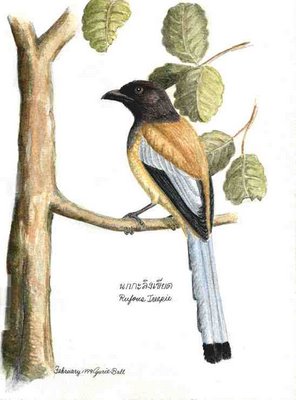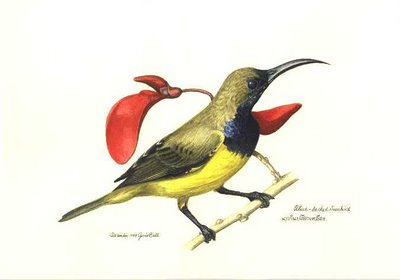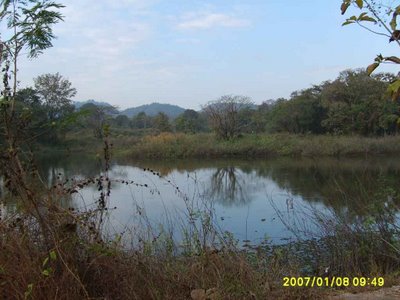MY WARBLING MADDENS A WARBLER

Rufous Treepie by Yurie Ball
(January 23rd HTT) Got a really good close-up of a male Blue Rock Thrush through my telescope this morning it was the Monticola Solitarius not the philippensis. Why I mention this is because I got a good look at the undertail coverts and they were chestnut with dark barring, the rest of the bird was dark blue as expected, no books seem to mention this. The other race has a chestnut belly and undertail coverts.
Thought I saw a Great Crested Grebe but it was at the far end of the lake and there was a heat shimmer in the air. By the time I reached the other side it had disappeared.
(January 24th Mae Hia) Two Cinnamon Bitterns seen sparring on the edge of a reed bed and then chasing each other around the Little Grebe Pond. They aren’t usually so visible at this time of year, it is only during the breeding season that they can be seen vying for females and then flying backwards and forwards feeding young. Incidentally Little Grebe Pond hasn’t produce a Little Grebe in over two weeks. As I mentioned before I think it’s due to the invasion of the pond by 4 or 5 aggressive Common Moorhens, may have to rename the pond.
Two Siberian Rubythroats came out of the undergrowth to my most unbirdlike ‘cherk, cherk’ calls. There must have been something there that they recognised, that same call will also aggravate the Thick-billed Warbler. He goes into a paroxysm of rage at my calls, yet his is really nothing like the one I’m attempting.
(January 25th HTT) Well it was the Great Crested Grebe I saw the other day, this time I got a good view through my scope. The long white throat and the brown neck with the slight crest at the back of its head were plainly visible (non-breeding plumage). A very rare bird here and that brings the total for the area to 243 species. Also a dozen or so Rufous Treepies causing a raucous racket, I couldn’t find the reason for their tantrums but something had upset them.
(January 28th Mae Hia) A new bird for the area and that was a lone Great Egret seen flying overhead. Not a special bird but they always become special when they are the first seen in the area. Three Barbets, lineated, Great and Coppersmith seen in the same dead tree at the same time, it’s not the first time either.
(January 29th HTT) A flock of about 10 Blue Magpies heard making a racket and then they trailed out of the trees one at a time, in line with them was a Greater Racket-tailed Drongo. It must have been having an identity crisis as it was imitating the magpies calls to perfection. It occasionally gave itself away by throwing in one of its own more bell-like calls and, of course, it looked nothing like a magpie.



